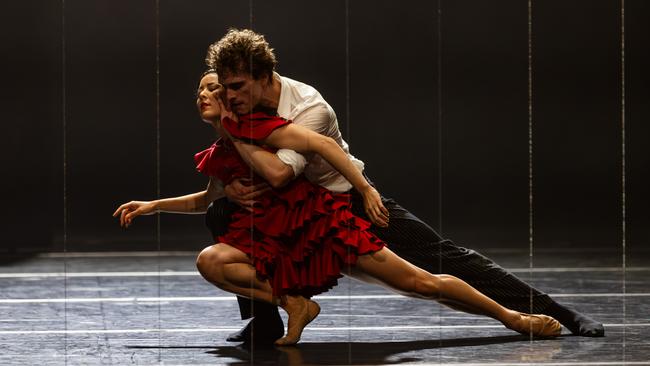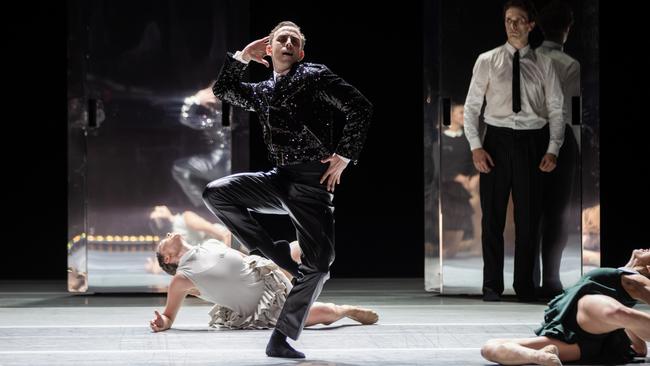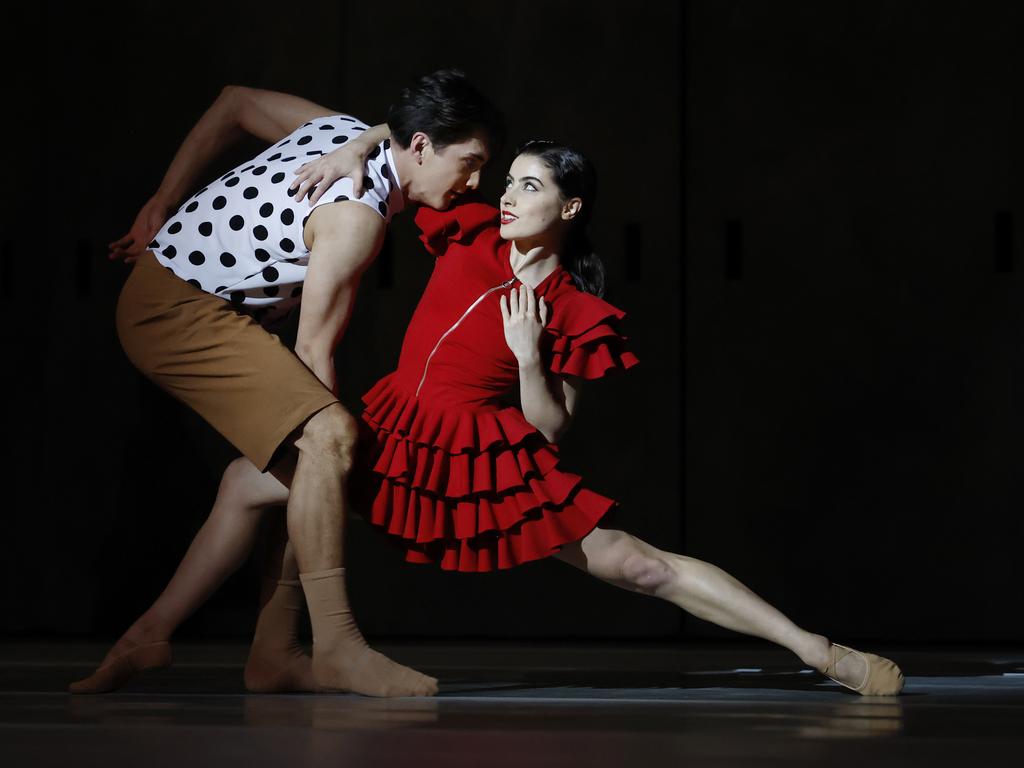Johan Inger’s ‘nightmare’ Carmen conjures an undeniably powerful vision
The Australian Ballet’s staging of this 2015 work is a long way from sunny Seville, bandits’ hideouts and bull-fighting rings.

Johan Inger sees Carmen as a nightmare, which it is. In his darker-than-dark version of a story that just won’t go away, the Swedish choreographer gets inside the head of the woman’s murderer, Don Jose, and chillingly finds nothing there.
Well, there’s a collection of destructive impulses but otherwise Inger’s Don Jose is an abject nobody who can’t have what he wants so destroys it.
The gulf between the woman and her pursuer could not be wider and the disconnect gave The Australian Ballet’s staging of this 2015 work its knockout punch on opening night. With Carmen’s death a blazing light was sucked into a black hole.
Jill Ogai’s physical daring and natural, vivid stage presence made her a phenomenal Carmen. The ferocious appetite for life was intoxicating. When she was present no one else mattered.
For a choreographer wanting to deny Don Jose the slightest drop of sympathy, the charismatic Callum Linnane would seem counterintuitive casting.
Intriguingly, Linnane went against type to erase all vestiges of personal allure. His Don Jose was a blank-eyed man who could have been the walking dead. He disappeared into the tormented body language and was increasingly devoured by an ever-growing phalanx of masked figures.
These external expressions of internal disintegration were used strikingly as Don Jose obsessed over Carmen’s other suitors, the slinky toreador (Marcus Morelli, a kind of human glitter-ball in his sequined jacket) and Don Jose’s superior officer, Zuniga (Brett Chynoweth, tightly coiled).
The setting for this unsettling psychological drama is a stripped-back, anonymous, anywhere-at-any-time place. Colours are mostly neutral and a fluid design of movable panels only lightly suggests locations. Suffice it to say we are a long way from sunny Seville, bandits’ hideouts and bullfighting rings.

A long way too from the Bizet opera that kickstarted the Carmen industry in 1875. Inger is more indebted to Prosper Merimee’s down-and-dirty novella, published in 1845 and well worth a read, although he has a decidedly 21st-century take on the material.
Inger replaces Merimee’s framing device with one of his own, introducing a Boy (Lilla Harvey) who observes and sometimes participates in the action. He is perhaps Don Jose as a child or a warning that the cycle of violence against women will be perpetuated. Possibly both.
The Boy also plays a crucial role in the horrifying scene in which Don Jose fantasises about playing happy families with Carmen. It’s brutal and unforgettable.
Inger’s championing of women is laudable even as his choreography sometimes falls into cliches of female sexuality (there are three assistant choreographers credited, all male). You might argue that to show something is to critique it but it doesn’t always feel that considered.
There are also a couple of longueurs, strange for such a compact work, and Inger does us no favours by asking for wince-making singing to Bizet’s Toreador theme, which the dancers did badly.
What they did do superbly was interpret an undeniably powerful vision. The tight cast of 18 was intensely engaged with Inger’s expansive, hyper-articulated movement and looked wonderful in it.
It would be a brave choreographer who didn’t use Bizet’s score in some form and here it’s heard in Rodion Shchedrin’s Carmen Suite (1967) and other orchestrations, interspersed with additional new compositions by Marc Alvarez.
The music is terrific, familiar but often surprising, and boldly delivered by the Opera Australia Orchestra with visiting conductor Daniel Capps at the helm.
Tickets: $61-$362. Bookings: 02 9250 7777 or online. Duration: 105 minutes including interval. Ends April 27.






To join the conversation, please log in. Don't have an account? Register
Join the conversation, you are commenting as Logout